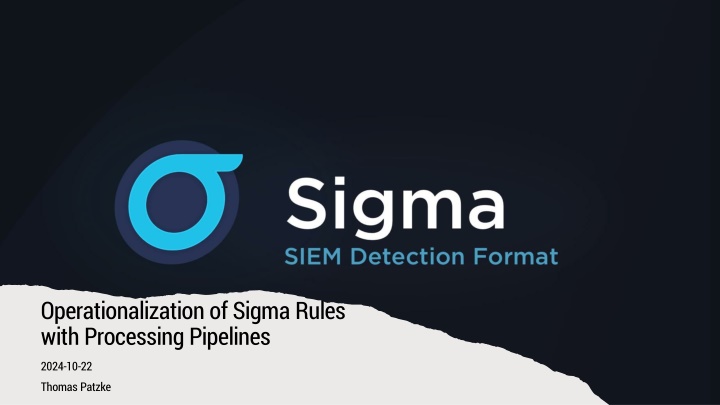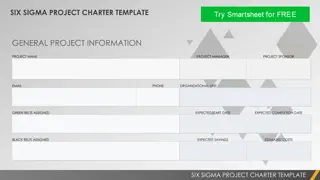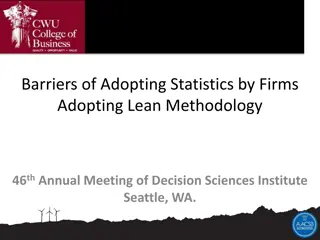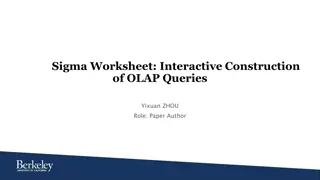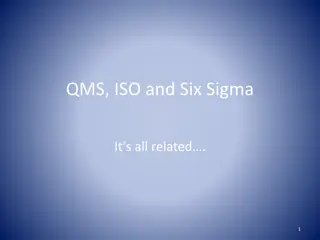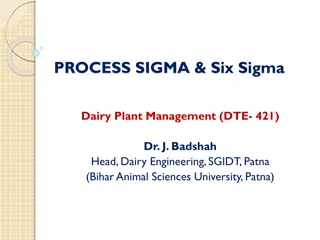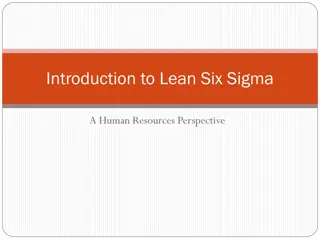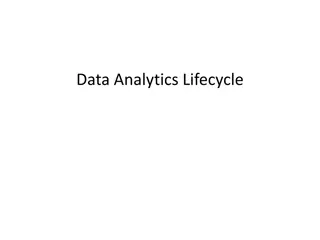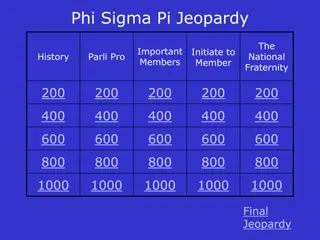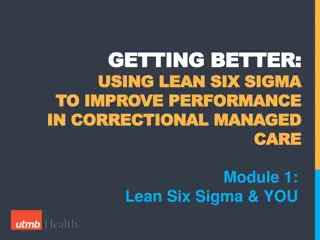Operationalization of Sigma Rules: Setting Up Prerequisites and Converting Rules
Utilize the SigmaHQ Sigma rule repository to detect threats and convert Sigma rules into your SIEM's query language. Learn about mapping field names, value transformations, adding conditions, and embedding queries into structures. Dive into advanced use cases such as additional conditions and placeholders. Prerequisites include Python 3.9 to 3.12, Sigma CLI installation, and cloning of the Sigma workshop repository. Explore the target query language and data model with examples using Splunk and sometimes Elasticsearch.
Download Presentation

Please find below an Image/Link to download the presentation.
The content on the website is provided AS IS for your information and personal use only. It may not be sold, licensed, or shared on other websites without obtaining consent from the author.If you encounter any issues during the download, it is possible that the publisher has removed the file from their server.
You are allowed to download the files provided on this website for personal or commercial use, subject to the condition that they are used lawfully. All files are the property of their respective owners.
The content on the website is provided AS IS for your information and personal use only. It may not be sold, licensed, or shared on other websites without obtaining consent from the author.
E N D
Presentation Transcript
Operationalization of Sigma Rules with Processing Pipelines 2024-10-22 Thomas Patzke
Agenda 1. 2. 3. 4. 5. 6. 7. 8. Introduction: What & Why? Setting up Prerequisites Mapping Field Names Value Transformations Add Conditions Placeholders Embedding Queries into Structures Q&A Prerequisites: Python 3.9 to3.12 Sigma CLI: sigma-cli on PyPI Installsigma-cli. Recommendation: separate Python virtual environment or pipx pipx install sigma-cli Clone oftheSigma workshoprepository: git clone https://github.com/SigmaHQ/sigma. git Clone oftheworkshoprepository: https://github.com/thomaspatzke /sigma-workshop- operationalization
Introduction: Motivation Goal: utilize the SigmaHQSigma rule repository (or another one) to detect threats. Sigma rules must be converted into the query language of your SIEM. Challenges: Field names in Sigma rules are different than in your SIEM or data model: CommandLine process process.command_line Values differ too: C:\Windows\System32\cmd.exe \Device\Harddiskvolume3\Windows\System32\cmd.exe cmd.exe
Introduction: Advanced Use Cases Additional conditions, often search restrictions to increase performance index=windows-logs Placeholders, e.g. domain controllers, vulnerability scanners etc. Stored as list that should be integrated into query. Dynamic via lookup in SIEM Data structures for bulk import of rules or other purposes. Splunk savedsearches.conf Elastic NDJSON exports Documentation All these use cases don t require to touch the Sigma rules, everything can be done with processing pipelines!
Prerequisites Youneed: Python 3.9 to3.12 Sigma CLI: sigma-cli on PyPI Installsigma-cli. Recommendation: separate Python virtual environment orpipx pipx install sigma-cli Clone oftheSigma workshoprepository: git clone https://github.com/SigmaHQ/sigma.git Use itasworkingdirectory, all pathsin theslides arerelative to thisreposroot directory. Clone oftheworkshoprepository: https://github.com/thomaspatzke/sigma-workshop- operationalization
Target Query Language & Data Model I will show everything with Splunk and sometimes Elasticsearch, but the workshop is mostly query language-agnostic. The target data model is hypothetical. It s chosen to show as much features as possible. Nevertheless, there are parallels to real existing data models. If you want to just follow : sigma plugin install splunk elasticsearch Feel free to use your favorite query language or some real challenges!
First Conversion Let's start to convert a Sigma rule into a query. Sigma rule: rules\windows\process_creation\proc_creation_win_rundll32_obfuscated_o rdinal_call.yml Command: sigma convert -t splunk --without-pipeline rules\windows\process_creation\proc_creation_win_rundll32_obfuscat ed_ordinal_call.yml
Conversion Result Image="*\\rundll32.exe" OR OriginalFileName="RUNDLL32.EXE" OR CommandLine="*rundll32*" CommandLine IN ("*#+*", "*#-*") In our target data model: The field Image is named ImageFileName. As the field name says, ImageFileName doesn t contains a path but just the file name. There s no OriginalFileName field.
Writing a Processing Pipeline Metadata Field Mapping Transformation Drop detection transformation Field name condition restricts it to the defined field. Value replacement path to file name: Transformation with pattern & replacement Restrict transformation to defined field.
Applying the First Pipeline Command: sigma convert -t splunk -p pipeline-1.yml rules\windows\process_creation\proc_creation_win_rundll32_obfuscat ed_ordinal_call.yml Result: ImageFileName="rundll32.exe" OR CommandLine="*rundll32*" CommandLine IN ("*#+*", "*#-*") Just to Compare, the previous result: Image="*\\rundll32.exe" OR OriginalFileName="RUNDLL32.EXE" OR CommandLine="*rundll32*" CommandLine IN ("*#+*", "*#-*")
Fields & Values: Hints & Caveats Caveat: removing detection items changes the detection logic! If it removes an essential part this can result in a useless detection with many hits. Don t use rule then (or try to improve it). Here it was the original file name one of various attributes to identify the file. Fields can be mapped 1:n results in OR-ing all fields. Useful in migration scenarios between data models.
Controlled Failure What s if path also specifies directories and can t be mapped to the data model? Fail! It s important that no detection query is emitted that is not functional. This gives a false sense of security. Try it: sigma convert -t splunk -p pipeline-2.yml sigma\rules\windows\process_creation\proc_creation_win_appvlp_unco mmon_child_process.yml
Rule Conditions There s another type of condition: rule conditions Use Cases: Restricting to log sources Match on rule tags and (custom) attributes Check existence of field or detection item on rule level. Evaluation of conditions Rule conditions: always, once for every rule Detection item conditions: only for detection item transformations, once for every detection item Field name conditions: additionally on field name list items of Sigma rule Example: detection_item_failure vs rule_failure
Add Conditions Always searching everywhere isn t efficient. Example: searching Windows process creation events in Linux logs. Solution: add conditions based on log source. Example: All logs are contained in the index windows (index=windows) The sourcetypeis corresponds to the category: sourcetype=Custom:<Sigma rule category>
Placeholders Sigma supports %placeholders% There are different possibilities to handle placeholders: Replace with a value or a list of values (value_placeholders) Replace with a query expression, e.g. lookup (query_expression_placeholders) Ignore them by replacing with * as last resort (wildcard_placeholders) Try it with: rules- placeholder\windows\process_creation\proc_creation_win_userdomain_ variable_enumeration.yml
Query Postprocessing & Finalization: Generating Importable Output Convert all process creation rules: sigma convert -t splunk -p pipeline-4.yml s rules\windows\process_creation It s just a collection of queries, you can just copy&paste. SIEMs usually have a data format to import queries: Splunk: savedsearches.conf Elasticsearch: NDJSON import There s a savedsearches output format in the Splunk backend, but it lacks flexibility.
Query Postprocessing & Finalization: Embedding Query in Use Case Framework Usually, detections are embedded in some use case framework: Results are enriched with detection information, e.g. rule metadata. Results are written to an index or sent to other system (e.g. ticketing, SOAR) via API. Different scheduling parameters depending on log source: Near real-time search for real-time logs. Query delay for logs ingested in batches.
Example: Splunk savedsearches.conf Extend query by enrichment & storage in notable events index Put query into structure Prefix output with some defaults.
Recap: What have learned Mapping field names Transforming values Fail if something is not possible Adding conditions Field name, detection item and rule conditions/transformations Placeholders: make detections flexible Post-processing and finalization: embedding generated queries into data structures
But theres more Transformations: Adding/removing/changing field lists ((add|change|remove)_field) Mapping strings with a source/target value dictionary (map_string) Stateful pipelines (set_state) Nesting of multiple processing item in pipeline (nest) Conditions: Check processing state (processing_state) Check if former transformation was applied (processing_item_applied) Check if rule attribute is set to a value (rule_attribute) Check for tags (tag) and many more!
Contact & Resources thomas@patzke.org Ein Bild, das Muster, Stoff, n hen enth lt. Ein Bild, das Muster, Quadrat, Symmetrie, Design enth lt. Automatisch generierte Beschreibung Automatisch generierte Beschreibung Ein Bild, das Muster, Pixel, Design enth lt. Automatisch generierte Beschreibung Sigma Discord Documentation Sponsoring Ein Bild, das Muster, Symmetrie, Stoff, n hen enth lt. Ein Bild, das Muster, Symmetrie, Stoff, n hen enth lt. Automatisch generierte Beschreibung Automatisch generierte Beschreibung Blog: Pipelines Blog: Post-Processing Blog: Placeholders
